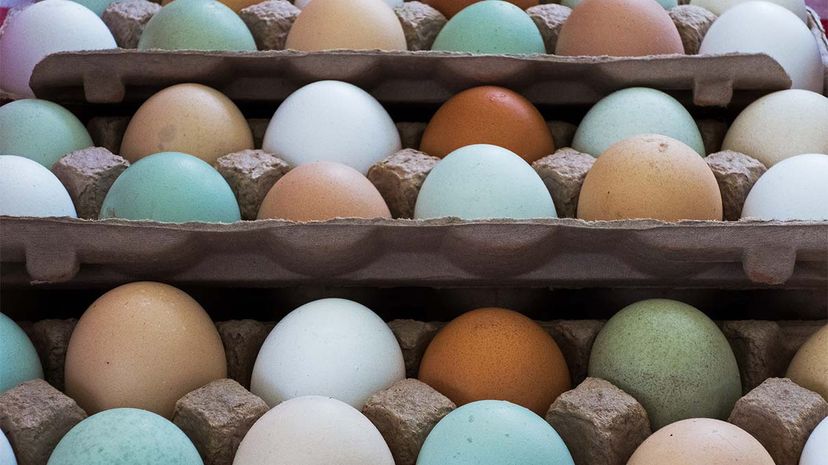Dr. Justin Fowler (which came first, the surname or the profession?), a professor in the University of Georgia's poultry science department, shines a light on things. "The different colors, or the presence of spots or speckling, come down to the genetics of the bird," he says.
"Leghorn chickens (which make up most of the commercial egg industry in the U.S.) lay white eggs, while Orphingtons or Plymouth Rocks will lay brown eggs," explains Fowler. "The Ameraucana breed has a pigment that is able to permeate the whole egg shell and make blue-colored eggs that are colored on both the inside and outside of the shell."
Pigment Tells
Want to know whether a specific chicken will pop out a white egg or a colored egg? Examine the chicken's earlobe. (Surprise, birds have earlobes!)
"Breeds with white earlobes will typically be those that do not put extra pigment on the egg shell before laying," says Fowler. And more often than not, chickens with lighter earlobes tend to have white feathers, and thus white eggs, while those with colored feathers and earlobes tend to produce colored eggs.
Egg Development and Shell Color
Chicken yolks, or ova, form in the chicken's ovaries. A fully formed ovum will leave the ovary and be deposited into the oviduct.
This part of the chicken's reproductive system has five distinct sequential segments which the yolk passes through on its way to the outside world, but it's the fourth one — the shell gland — that affects the color of the egg. This is where the shell forms around the ovum.
"The shell of all chicken eggs are made of calcium carbonate, a crystal that is white in color," says Fowler via email. "So all eggs are, at least at the start, white. Any that we then see that are other colors have had a pigment deposited on them as they were moving through the oviduct, after the white egg shell had been deposited. You can see this if you open up a brown egg and look at the inside of the shell, it'll be white."


